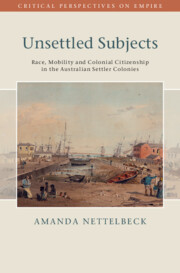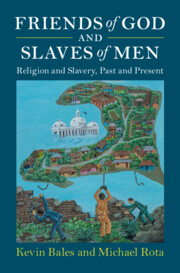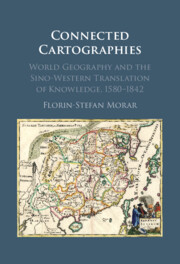Refine search
Actions for selected content:
615880 results in History
Contents
-
- Book:
- Explaining the History of American Foreign Relations
- Published online:
- 24 October 2025
- Print publication:
- 13 November 2025, pp vii-viii
-
- Chapter
- Export citation
5 - Capitalism
-
-
- Book:
- Explaining the History of American Foreign Relations
- Published online:
- 24 October 2025
- Print publication:
- 13 November 2025, pp 103-120
-
- Chapter
- Export citation

Unsettled Subjects
- Race, Mobility and Colonial Citizenship in the Australian Settler Colonies
- Coming soon
-
- Expected online publication date:
- November 2025
- Print publication:
- 20 November 2025
-
- Book
- Export citation
Index
-
- Book:
- Vietnam's Coal Frontier
- Published online:
- 25 October 2025
- Print publication:
- 13 November 2025, pp 305-310
-
- Chapter
- Export citation
Acknowledgments
-
- Book:
- Vietnam's Coal Frontier
- Published online:
- 25 October 2025
- Print publication:
- 13 November 2025, pp ix-xii
-
- Chapter
- Export citation
3 - The Pioneers
- from Part I - Precolonial Settings and the Introduction of Large-Scale Coal Mining
-
- Book:
- Vietnam's Coal Frontier
- Published online:
- 25 October 2025
- Print publication:
- 13 November 2025, pp 68-100
-
- Chapter
- Export citation
Bibliography
-
- Book:
- Vietnam's Coal Frontier
- Published online:
- 25 October 2025
- Print publication:
- 13 November 2025, pp 299-304
-
- Chapter
- Export citation
Contributors
-
- Book:
- Explaining the History of American Foreign Relations
- Published online:
- 24 October 2025
- Print publication:
- 13 November 2025, pp ix-xiv
-
- Chapter
- Export citation
1 - Mining Patterns and the Pacification of the Coal Mining Frontier
- from Part I - Precolonial Settings and the Introduction of Large-Scale Coal Mining
-
- Book:
- Vietnam's Coal Frontier
- Published online:
- 25 October 2025
- Print publication:
- 13 November 2025, pp 21-43
-
- Chapter
- Export citation
17 - Meaning and Emotion
-
-
- Book:
- Explaining the History of American Foreign Relations
- Published online:
- 24 October 2025
- Print publication:
- 13 November 2025, pp 342-362
-
- Chapter
- Export citation
9 - National Security
-
-
- Book:
- Explaining the History of American Foreign Relations
- Published online:
- 24 October 2025
- Print publication:
- 13 November 2025, pp 183-203
-
- Chapter
- Export citation
Abbreviations
-
- Book:
- Vietnam's Coal Frontier
- Published online:
- 25 October 2025
- Print publication:
- 13 November 2025, pp xiii-xiv
-
- Chapter
- Export citation
5 - Coal Mining, Deforestation, and Forest Management
- from Part II - The Coal Regime during the Boom Years and an Environment at Stake
-
- Book:
- Vietnam's Coal Frontier
- Published online:
- 25 October 2025
- Print publication:
- 13 November 2025, pp 133-161
-
- Chapter
- Export citation
4 - Liberal Mining Regime and the Coal Rush of the 1920s
- from Part II - The Coal Regime during the Boom Years and an Environment at Stake
-
- Book:
- Vietnam's Coal Frontier
- Published online:
- 25 October 2025
- Print publication:
- 13 November 2025, pp 103-132
-
- Chapter
- Export citation
8 - Technology and National Security
-
-
- Book:
- Explaining the History of American Foreign Relations
- Published online:
- 24 October 2025
- Print publication:
- 13 November 2025, pp 161-182
-
- Chapter
- Export citation
10 - Ideology
-
-
- Book:
- Explaining the History of American Foreign Relations
- Published online:
- 24 October 2025
- Print publication:
- 13 November 2025, pp 204-224
-
- Chapter
- Export citation
2 - The Discovery of the Quảng Yên Coal Basin
- from Part I - Precolonial Settings and the Introduction of Large-Scale Coal Mining
-
- Book:
- Vietnam's Coal Frontier
- Published online:
- 25 October 2025
- Print publication:
- 13 November 2025, pp 44-67
-
- Chapter
- Export citation
11 - Race
-
-
- Book:
- Explaining the History of American Foreign Relations
- Published online:
- 24 October 2025
- Print publication:
- 13 November 2025, pp 225-240
-
- Chapter
- Export citation

Friends of God and Slaves of Men
- Religion and Slavery, Past and Present
- Coming soon
-
- Expected online publication date:
- November 2025
- Print publication:
- 27 November 2025
-
- Book
- Export citation

Connected Cartographies
- World Geography and the Sino-Western Translation of Knowledge, 1580-1842
- Coming soon
-
- Expected online publication date:
- November 2025
- Print publication:
- 30 November 2025
-
- Book
- Export citation
